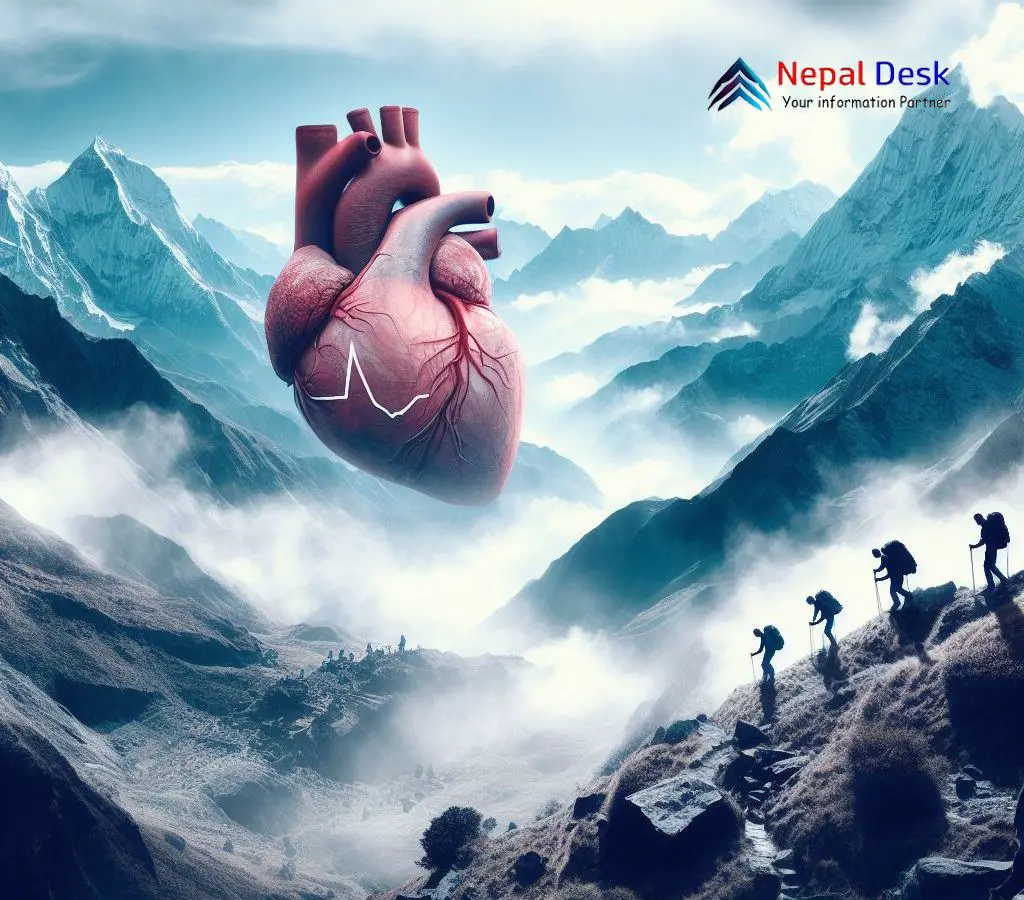Heart Health and Trekking in Nepal: Precautions for the Adventurous
Published Date

Published Date
Emphasizing heart health on World Heart Day: Essential safety guidelines for hikers in Nepal's Himalayas. Ensure your heart's safety while embracing nature's grandeur.
⏱ 2 min read
KATHMANDU - Known for its stunning Himalayan trails, Nepal draws in countless hikers every year. But the excitement of high-altitude hiking brings its own set of challenges, particularly for those with heart issues. With World Heart Day being celebrated worldwide, it's essential to emphasize heart health for hikers in Nepal.
Although hiking in Nepal provides unrivaled natural beauty, it can also present life-threatening dangers if hikers aren't careful. Reports reveal that hikers have encountered severe health problems such as altitude sickness, heart attacks, and diabetic ketoacidosis.
Safety Guidelines for Heart Patients
Consultation: If you have a pre-existing heart issue, talking to your doctor before you begin a hike, especially at high elevations, is vital. An official letter from your doctor regarding your condition, medication, and emergency contacts can be extremely helpful.
Altitude Sickness: Altitude sickness or Acute Mountain Sickness (AMS) is a major concern for hikers in Nepal. Symptoms like headache, nausea, dizziness, and shortness of breath can occur. If you experience any of these signs, it's crucial to let your guide or fellow hikers know right away. Ignoring these symptoms may lead to severe conditions such as High-altitude cerebral edema (HACE) or High-altitude pulmonary edema (HAPE).
Acclimatization: The most effective way to avoid altitude sickness is by giving your body enough time to adjust. Once you reach 2,500 meters, restrict your ascent to 500 meters daily and take a rest day every three days or following a 1,000-meter climb.
Hydration: It's crucial to stay hydrated. Be sure to drink boiled or purified water to prevent waterborne diseases. Consuming untreated water can result in bacterial diarrhea, and giardia, among other illnesses.
Insurance: Obtain travel insurance that covers high-altitude hiking and potential evacuation expenses. Helicopter evacuations can be costly, so having the proper insurance can be a lifesaver.
Trekking Group: Hiking with a group or guide is suggested. It not only provides company but also guarantees safety in numbers, particularly during emergencies.
Weather and Avalanches: Stay informed about weather conditions. Unexpected snowfall might cause avalanches, especially at higher altitudes. Keeping yourself updated helps in making secure hiking choices.
Medication: If you're susceptible to altitude sickness, think about taking preventative medication like Acetazolamide (Diamox) after consulting your doctor.
In conclusion, while the appeal of the Himalayas is irresistible, safety must always be a hiker's main priority. As World Heart Day reminds us, taking care of our hearts is vital, especially when pushing ourselves in nature's great expanse.
